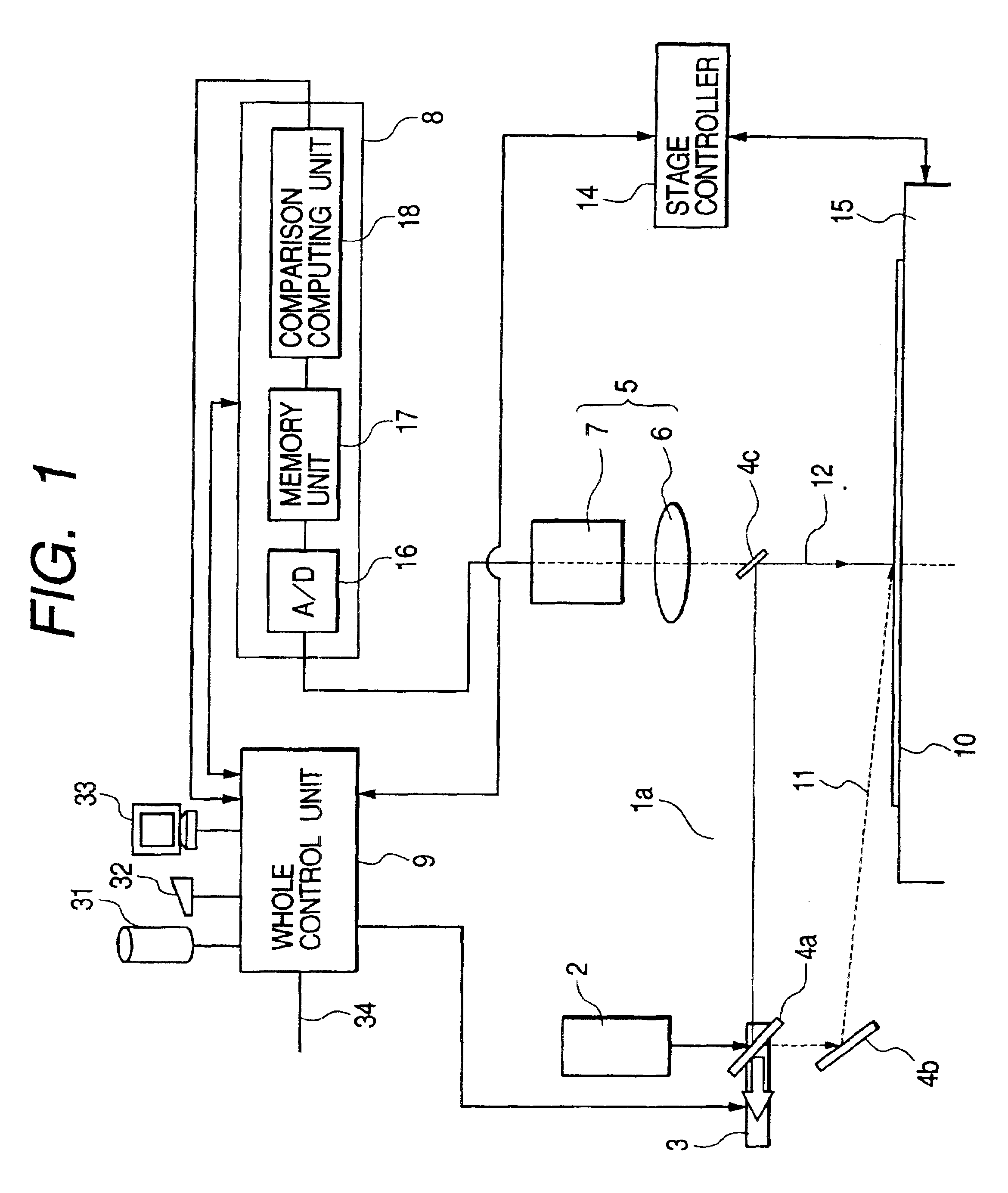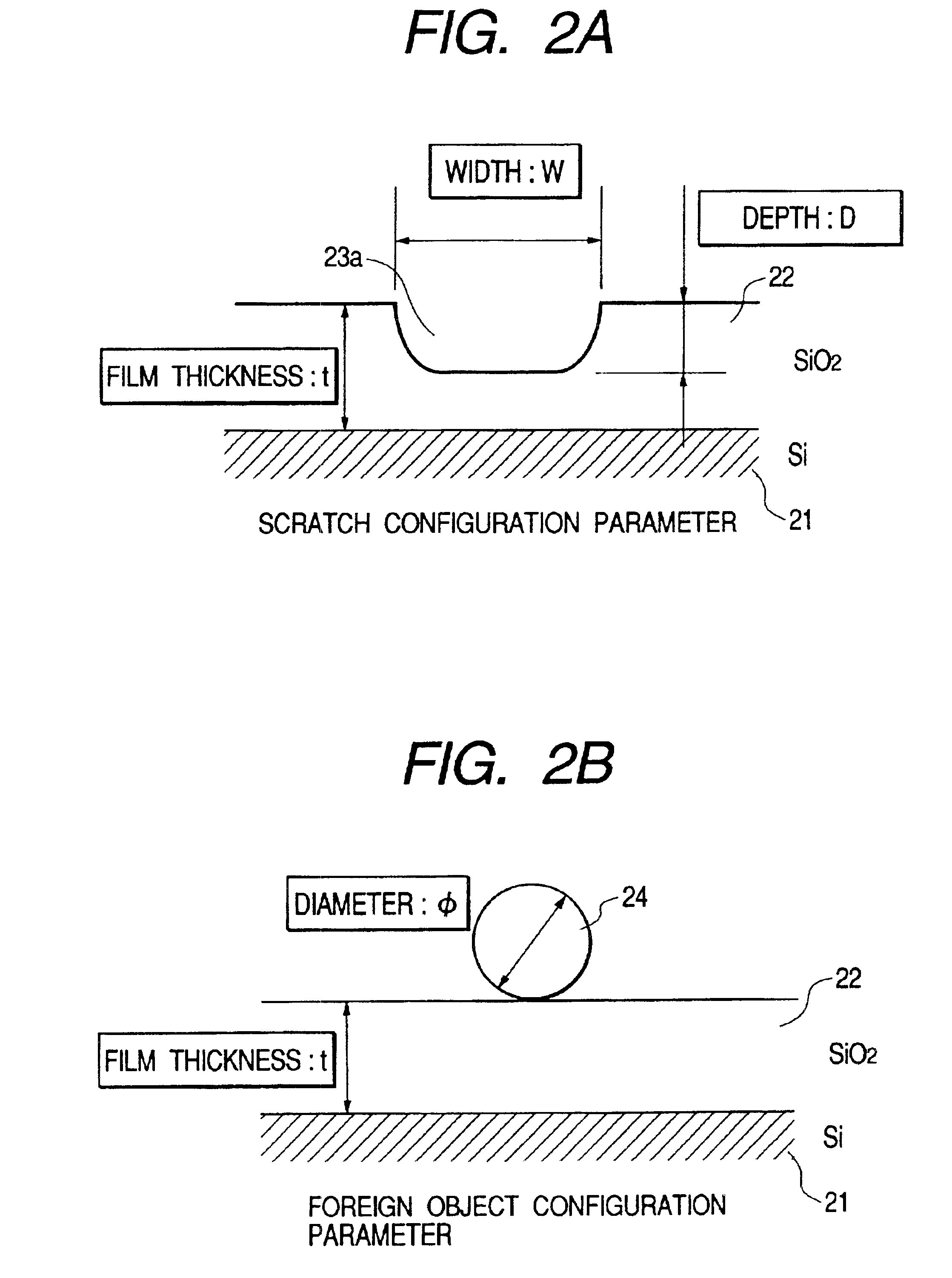Surface inspection apparatus and method thereof
- Summary
- Abstract
- Description
- Claims
- Application Information
AI Technical Summary
Benefits of technology
Problems solved by technology
Method used
Image
Examples
first embodiment
[0062]The first example of a surface inspection apparatus for inspecting the scratch or the like used for realizing the first embodiment will be described with reference to FIG. 1 to FIG. 9. In detail, as shown in FIG. 1, the surface inspection apparatus of the first example is provided with a wafer 10 that is an object to be inspected placed on a stage 15 controllably moved in X-Y direction based on the measured positional coordinate, an illumination optical system 1a comprising a light source 2 having a light source for emitting a light such as Ar laser of wavelength 488 nm (blue wavelength), nitrogen laser, He—Cd laser, or excimer laser (not limited to a laser light source), an optical path switching mechanism 3, and reflection mirrors 4a, 4b, and 4c, a detection optical system 5 comprising a condenser lens 6 and a photoelectric converter 7 having a photomultiplier, CCD camera, CCD sensor, or TDI sensor, a computation processing unit B comprising an A / D conversion unit 16 for con...
second embodiment
[0102]The discrimination is based on the fact that the scratch 23b having a deep depth D with respect to the width W has a long length inherently. The reason is that the wafer is polished with rotation in CMP process and the deep scratch will not have a short length differently from the nick having a local deep concave. the present invention is based on the above-mentioned certainty, a linear long defect is further classified as the large scratch 23b out of defects recognized as the foreign object 24 in step S64 shown in FIG. 6. At that time, the defect is classified based on the principle shown in FIG. 13A and FIG. 13B. When a light flux 12 is irradiated from the normal line direction onto a large scratch 23b with linear pattern as shown in FIG. 13B, the diffracted light exhibits a distribution having very strong directionality in the right angle direction of the linear pattern 23b. FIG. 13A shows a case in which a light flux 11 is irradiated with inclination from the normal line d...
fourth embodiment
[0110]Next, the fourth embodiment used to further classify the defect 23a that has been discriminated as the scratch by means of two directional illuminations according to configuration will be described in detail hereinafter with reference to FIG. 18 to FIG. 20B. CMP process involves not only the mechanical polishing but also chemical polishing such as etching simultaneously. Therefore, CMP is called as chemical mechanical polishing. Usually, the mechanical polishing action is predominant in the oxide film polishing process, and a typical scratch 23a is a continuous flaw 23aa comprising small linear scratches, each of which is crescent described as tire mark in FIG. 18. On the other hand, when the chemical polishing action is predominant, the V-shaped flaw 23ab having the circular plane cross section described as dimple mark in FIG. 18 is formed often. Furthermore, when a polishing pad that has been used for long time and has become hard is used, crowded small scratches 23ac that i...
PUM
 Login to View More
Login to View More Abstract
Description
Claims
Application Information
 Login to View More
Login to View More - R&D
- Intellectual Property
- Life Sciences
- Materials
- Tech Scout
- Unparalleled Data Quality
- Higher Quality Content
- 60% Fewer Hallucinations
Browse by: Latest US Patents, China's latest patents, Technical Efficacy Thesaurus, Application Domain, Technology Topic, Popular Technical Reports.
© 2025 PatSnap. All rights reserved.Legal|Privacy policy|Modern Slavery Act Transparency Statement|Sitemap|About US| Contact US: help@patsnap.com



